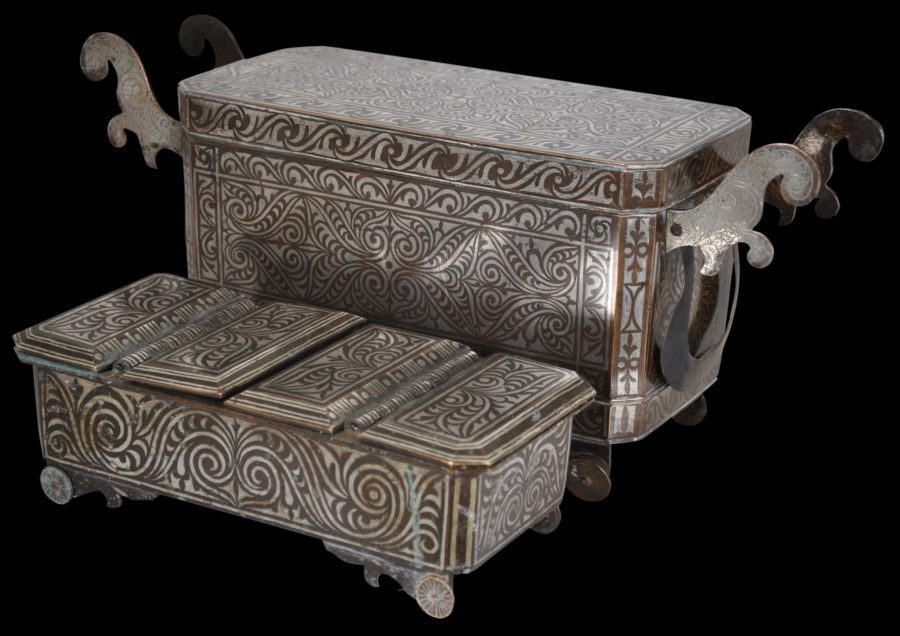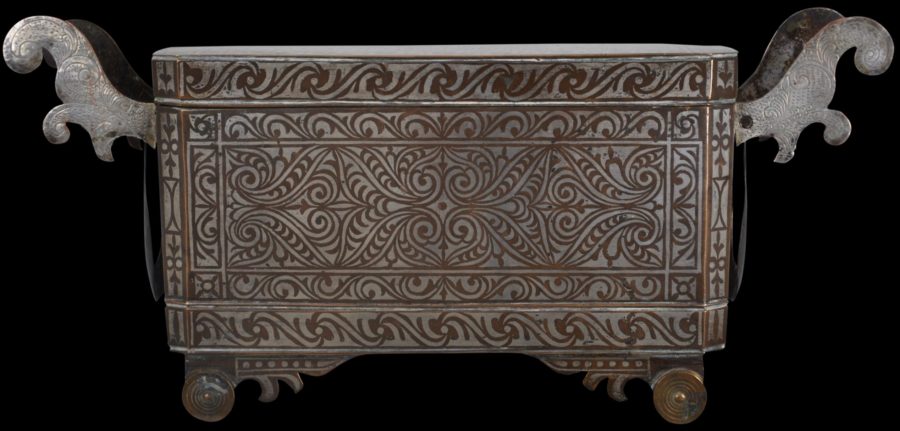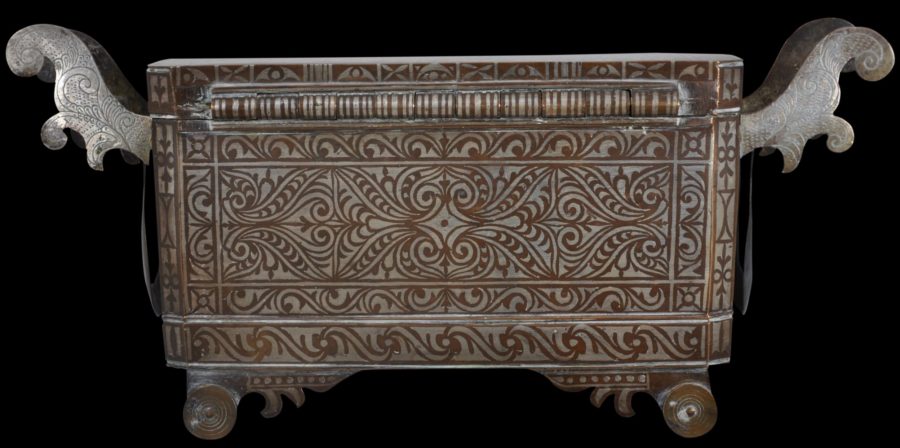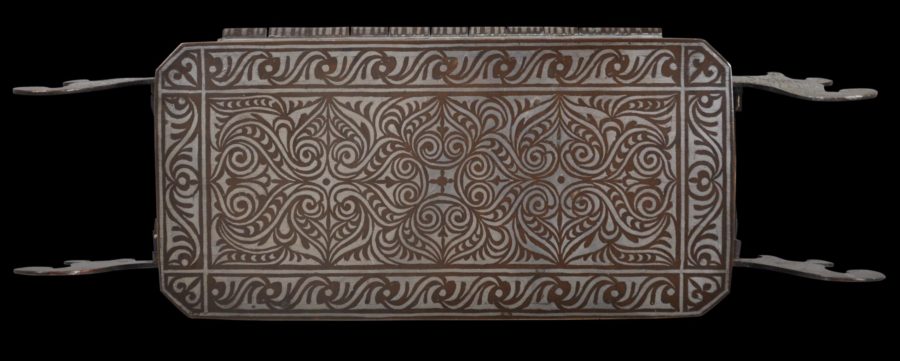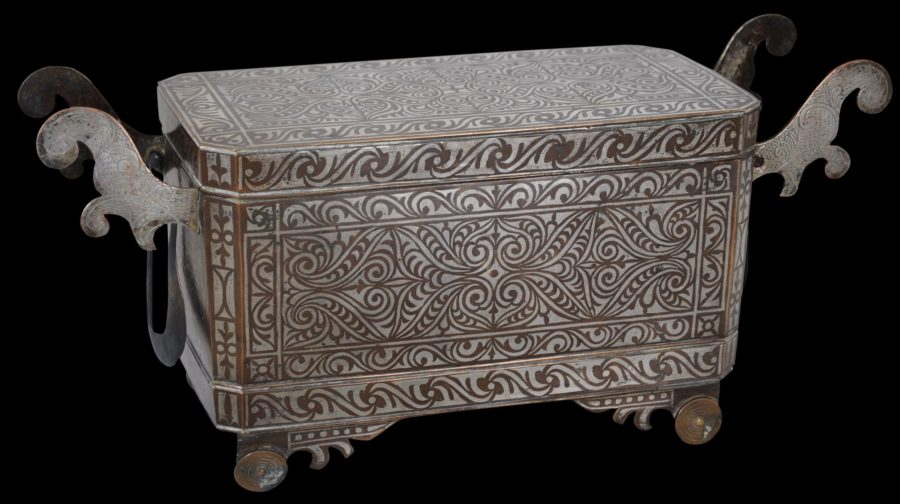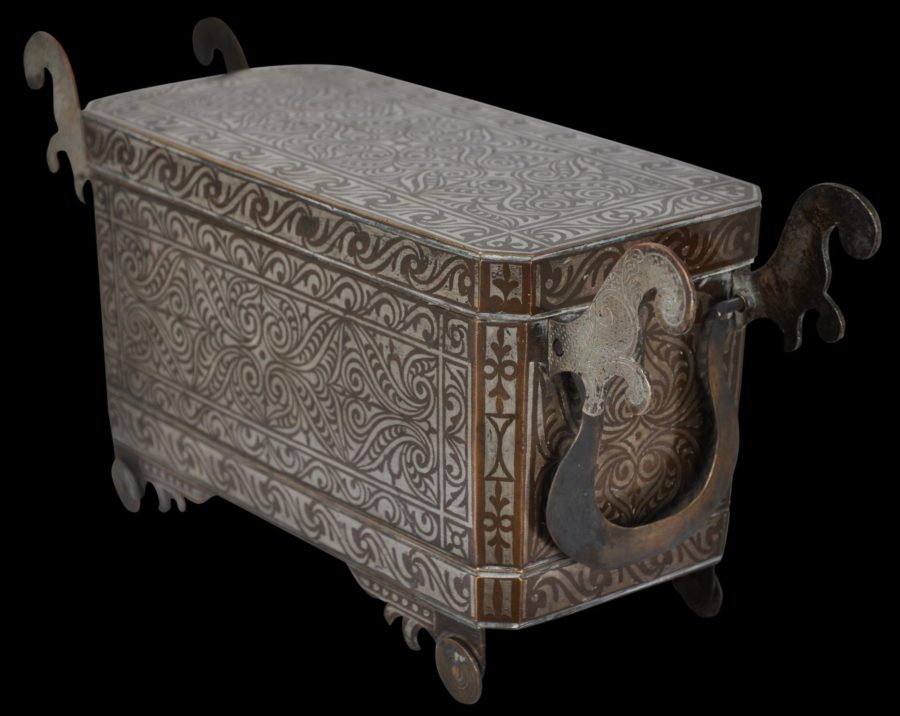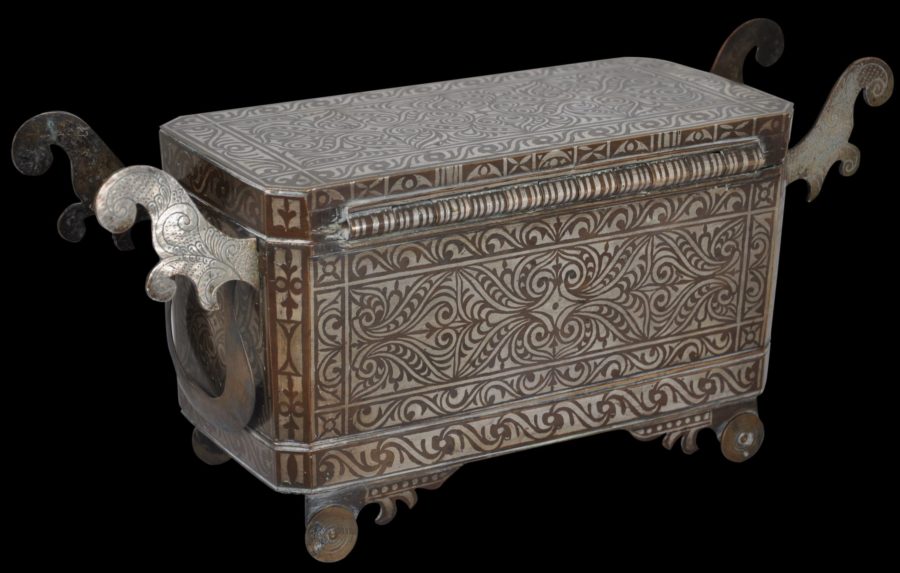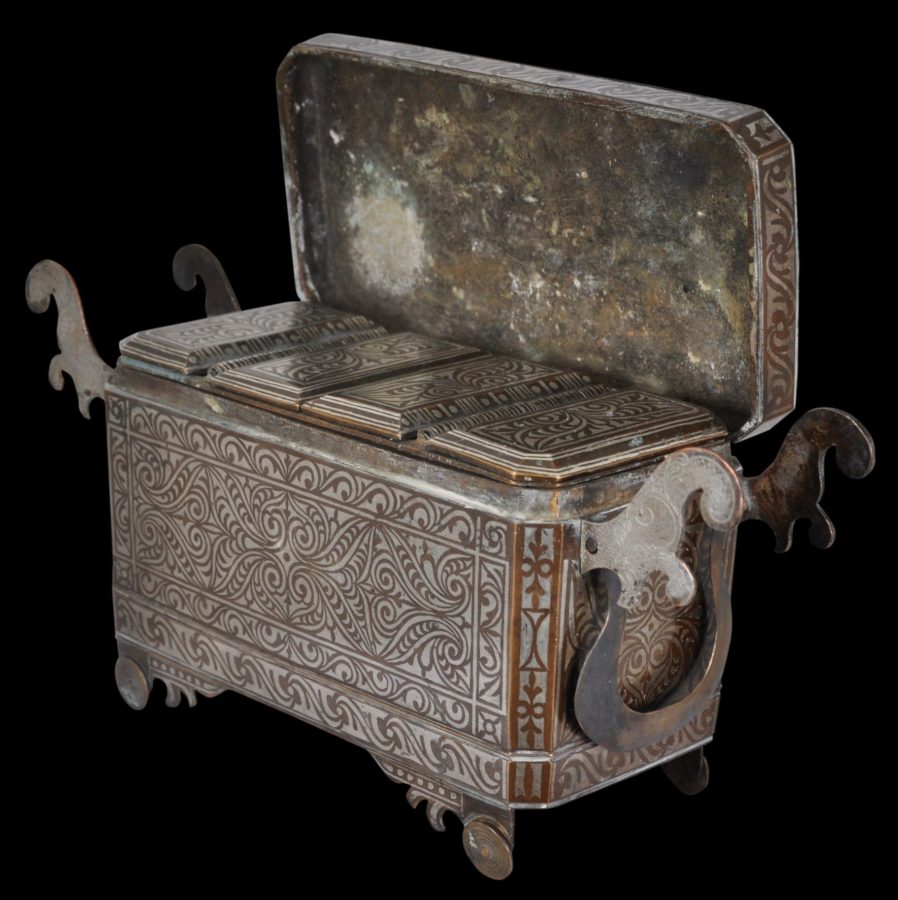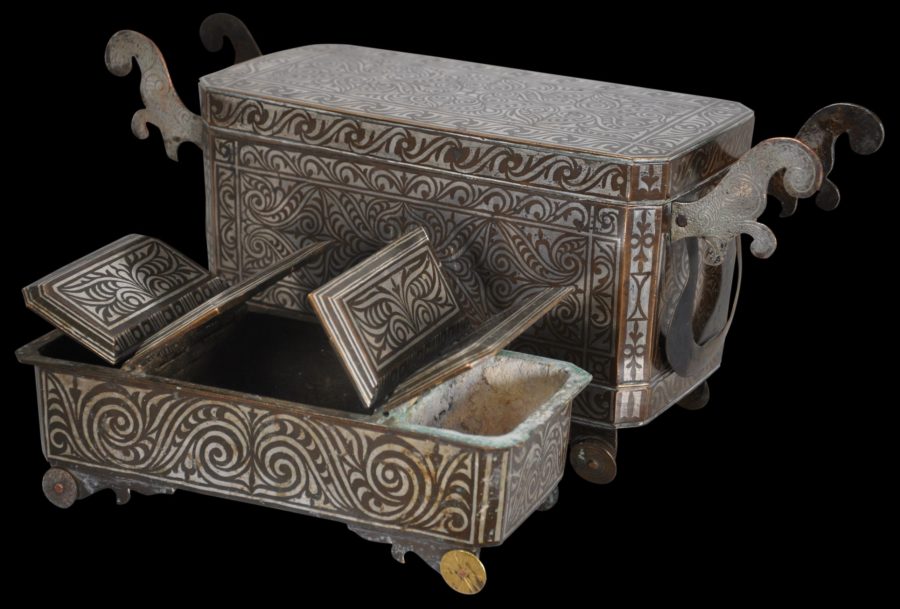Enquiry about object: 5891
Large, Silver-Inlaid Winged Brass Betel Box (Lutuan)
Mindanao, Philippines late 19th-20th century
length: 40.6cm, height: 17.1cm, depth: 13.2cm, weight: more than 5000g
Provenance
UK art market
This is a particularly large example of this type of betel box, known locally as a lutuan. This example is particularly attractive too on account of its ‘winged’ handle supports.
Betel chewing was prevalent in the southern Philippines as in much of the rest of Southeast Asia. Wealthier Maranao families on (Islamic) Mindanao were able to afford elaborate silver-inlaid brass betel boxes such as this large example. Such boxes were used to show off to household visitors and from which they were offered betel and the other component such as leaves and lime to make up the betel quid.
The box comprises an outer box with a hinged lid and handles, and an inner box that is divided into three lidded compartments covered by four hinged lids. One compartment was for powdered lime which was an essential part of the betel quid. Remnants of lime remain caked to the interior.
Both the inner and outer boxes rest on coin-like ‘wheels’. The inner box is a separately made, self-contained unit decorated on all sides with silver inlay. It drops into the outer box.
Both the inner and outer boxes are decorated with silver inlay on all visible sides with a repeated stylised orchid motif within scrolling obid-obid (stylised rope) borders, and stylised tail feathers of the sari-manok bird. Designs such as these are drawn from a local design repertoire that has its origins in wood carving.
This lutuan represents a fine and large example of Islamic metalwork from the most eastern outreach of Islamic art and civilisation: Mindanao island being significantly further east than even China – artwork from Islamic Southeast Asia remains chronically under-represented in the world’s major collections of Islamic art. It is in excellent condition with no losses to the silverwork. Evidence of use remains inside the lidded chambers.
Smaller examples are illustrated in several books including Henkel et al (2009, p. 156). Lutuan tell an interesting story of the spread of Islam and Islamic crafts. The silver inlay work shown on this box originated in Syria. The function originated in India. But the craftsmen were based in the Islamic southern Philippines.
This example is in excellent condition with a fine patina suggesting its age. There are no repairs and no losses to the silverwork.
References
Brownrigg, H., Betel Cutters from the Samuel Eilenberg Collection, Thames & Hudson, 1992.
Fraser-Lu, S., Silverware of South-East Asia, Oxford University Press, 1989.
Henkel, D. et al,Land of the Morning: The Philippines and its People, Asian Civilisations Museum, 2009.
Rooney, D.F., Betel Chewing Traditions in South-East Asia, Oxford University Press, 1993.


